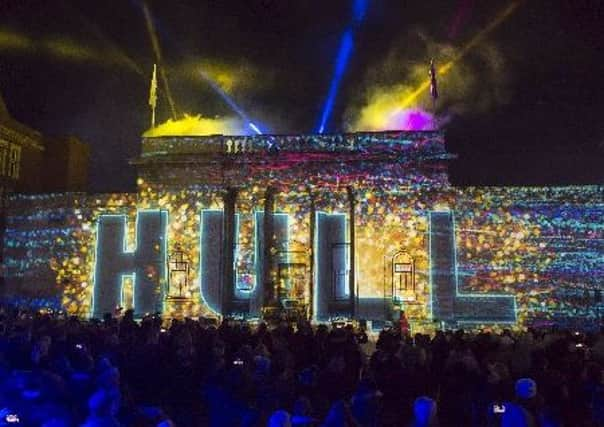Hull 2017: A city transformed by a year of culture


They’ll tell you about the 3.6million who attended one of the 2,000 or so events – and the £3.3bn of investment which has apparently flowed into the city along the Humber since it took on the mantle. Hang around long enough and they’ll mention the travel website Expedia which cited the arts programme as the reason hotel bookings shot up by almost 80 per cent over the summer and official employment figures that show the number of jobless to be the lowest on record.
It’s impressive stuff, but success can’t just exist on a spreadsheet or in the confines of the city council’s finance department.
Advertisement
Hide AdAdvertisement
Hide AdFor those living on the city’s Bransholme estate, where the exact percentage visitor spend has grown in the last 12 months is largely meaningless, the numbers had to be accompanied by something far less tangible.
It had to engender a feeling that something was changing from the Land of Green Ginger to the Fruit Market and beyond. And not just for Hull’s already thriving community of artists, musicians and actors.
And so it came to pass. I first spotted it when Spencer Tunick, a photographer whose trademark is mass nude art installations, invited anyone who wanted to strip off and paint themselves blue to join him at Queen’s Gardens.
In the early hours of one July morning in 2016, 3,500 answered the call. Some had travelled the length of the M1 to be there, Tunick’s biggest fan - 80-year-old Stephane Janssen - had hopped across the Atlantic from America, but most had come from the city suburbs.
Advertisement
Hide AdAdvertisement
Hide AdAs they walked through the dawn light passed the Guildhall to the Scale Lane swing bridge, stopping to pose for various photographs along the way, this blue army, which
included nurses, barmaids, retired vicars and a couple of war veterans, summed up the potential of UK City of Culture.
It didn’t matter whether they were fat or thin, rich or poor, what mattered was that while the rest of Hull was sleeping they came together to produce something more beautiful, more bewitching and more bonkers than they could have ever achieved alone.
The results of Tunick’s Sea of Hull were unveiled in the summer, but where he led, the rest followed and on New Year’s Day 12 months ago, the rest of the city got a chance to see what the fuss was all about.
Advertisement
Hide AdAdvertisement
Hide AdThe evening of January 1, 2017 was particularly bitter, but as the curtain went up on Made in Hull, a series of light projections on some of the city’s key buildings, the warmth of the reception thawed any last frost away.
It wasn’t perfect. The repaving of many of the main pedestrian routes and a series of major roadwork still weren’t finished. The resulting diversions had pushed a number of city centre businesses to the brink, but that night most saw past the sea of orange barriers.
Some of the artists involved were native Hullensians, others had only been introduced to the place through UK City of Culture, but they were united in an ambition to allow the birthplace of William Wilberforce, Sir Tom Courtenay and the chip shop delicacy, the Hull pattie, to tell its own story.
And what a story it is. It was one which over the last 12 months has featured chapters on Richard III, Philip Larkin, a fearless fishwife called Lillian Bilocca and an art collective who go by the name Throbbing Gristle.
Advertisement
Hide Ad